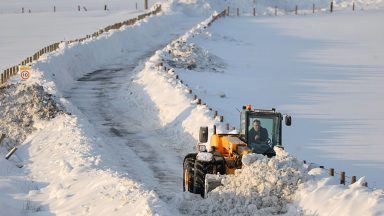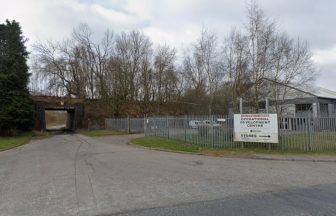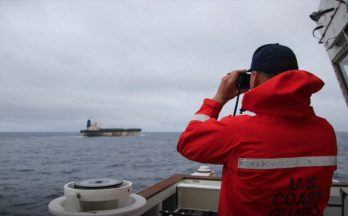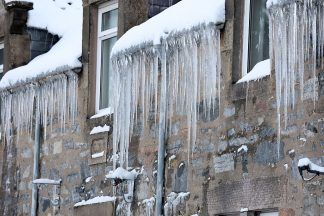Action must be taken to improve the operation of storm overflows in Scotland, an environmental watchdog has said.
Environmental Standards Scotland (ESS) found that steps must also be taken to improve monitoring and the regulatory guidance of storm overflow drains.
A report for the ESS found that there is no comprehensive publicly available information on the scale and environmental impact from spills from storm overflows in Scotland.
Storm overflows are part of the sewerage system and are designed to reduce the risk of sewers flooding homes and businesses.
However, spills from storm overflows can pose a risk to the environment and to human health.
The report said that the Combined Sewer Overflow (CSO) Meadowhead treatment works in North Ayrshire spilled waste water 365 times on 124 different days last year.
Almost half (49%) of 142 storm overflows spilled more than 50 times over the course of 2023, and 32% spilled more than 100 times.
Four overflows spilled more than 500 times.
The ESS also found that public data was only available for 8% of storm overflows, and that guidance for the regulations that control the treatment of waste water has not been updated since 1998, before the devolved Scottish Parliament was founded.
Mark Roberts, CEO of ESS said: “Despite high levels of public concern, there is a lack of transparent information about the operation and impact of storm overflows in Scotland.
“We have outlined steps that the Scottish Government, the Scottish Environmental Protection Agency (Sepa) and Scottish Water should take to improve data and monitoring on storm overflows in Scotland.
“We are also calling on the Scottish Government to publish up-to-date, clear and specific guidance about the exceptional circumstances when it is permissible for storm overflows to spill.
“Our analysis has found that while some storm overflows appear not to spill at all, others spill more frequently and for longer periods than can be considered exceptional. This situation must be addressed.
“ESS expects the Scottish Government, Scottish Water and SEPA to respond to the recommendations laid out in the report within six months.”
Sepa welcomed the ESS analysis, but said environmental water quality is “currently at its highest level ever in Scotland”.
The agency said more than 87% of watercourses are achieving “good” or “high” classifications for water quality.
Sepa said it also plans for 92% of water bodies to reach a “good” level or at least to improve in status by 2027.
David Harley, Sepa’s head of water and planning, said: “The majority of recommendations relate to areas of work that have been underway for some time through delivery of the river basin management plan, the improving urban waters route map and through compliance assessment.
“We welcome the acknowledgement by ESS that there has been significant progress in reducing the number of water bodies subject to pressure from wastewater.
“The improving urban waters route map is a national plan, required by Sepa, and Scottish Water published this in 2021. It details the environment improvement and monitoring actions required of Scottish Water, and as the regulator, we will ensure these actions are delivered.
“We agree there is more to do, and we will continue to safeguard and improve Scotland’s water environment by requiring targeted action to meet the objectives set out in river basin management plan and improving urban waters route map.”
A Scottish Water spokesperson said: “We will take time to fully consider the ESS report’s recommendations and both the Scottish Government and Sepa’s responses to it.
“However, we are already carrying out work and investing in improvements, in liaison with our environmental regulator, which will do what the report is recommending.”
The Scottish Government was contacted for comment.
Follow STV News on WhatsApp
Scan the QR code on your mobile device for all the latest news from around the country





























